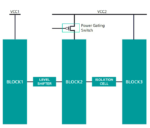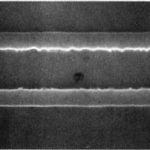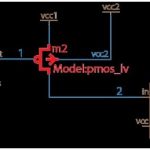The week before DAC I had the privilege to take a video call with Pradeep Thiagarajan – Product Manager, Simulation, Custom IC Verification at Siemens EDA to get an update on new simulation products. I’ve been following Solido for years now and knew that they were an early adopter of ML for Monte Carlo simulations with SPICE users.… Read More
Tag: calibre perc
Checking and Fixing Antenna Effects in IC Layouts
IC layouts go through extensive design rule checking to ensure correctness, before being accepted for fabrication at a foundry or IDM. There’s something called the antenna effect that happens during chip manufacturing where plasma-induced damage (PID) can lower the reliability of MOSFET devices. Layout designers run Design… Read More
Getting the most out of a shift-left IC physical verification flow with the Calibre nmPlatform
Who first came up with this term shift-left ? I’d assumed Siemens EDA as they use it so widely. But their latest white paper on the productivity improvements possible with shift-left Calibre IC verification flows puts the record straight: a software engineer called Larry Smith bagged the naming rights in a 2001 paper (leapfrogging… Read More
Calibre IC Manufacturing papers at SPIE 2023
The Siemens Calibre group was very busy last week at SPIE. Calling Calibre industry leading really is an understatement. Calibre is one of the reasons Moore’s Law has continued to this day. This tool is legendary. You can get more information on the Calibre landing page including product information, resource guide, blogs
Methods for Current Density and Point-to-point Resistance Calculations
IC reliability is an issue that circuit design engineers and reliability engineers are concerned about, because physical effects like high Current Density (CD) in interconnect layers, or high point-to-point (P2P) resistance on device interconnect can impact reliability, timing or Electrostatic Discharge (ESD) robustness.… Read More
Transistor-Level Static Checking for Better Performance and Reliability
My first transistor-level IC design job was with Intel, doing DRAM designs by shrinking the layout to a smaller process node, and it also required running lots of SPICE runs with manually extracted parasitics to verify that everything was operating OK, meeting the access time specifications and power requirements across PVT … Read More
Saving Time in Physical Verification by Reusing Metadata
Physical verification is an important and necessary step in the process to tapeout an IC design, and the foundries define sign-off qualification steps for:
- Physical validation
- Circuit validation
- Reliability verification
This sounds quite reasonable until you actually go through the steps only to discover that some of the … Read More
Stop TDDB from getting through peanut butter
There are a few dozen causes of semiconductor failure. Most can be lumped into one of three categories: material defects, process or workmanship issues, or environmental or operational overstress. Even when all those causes are carefully mitigated, one factor is limiting reliability more as geometries shrink – and it… Read More
TSMC ♥ Mentor (Calibre PERC)
As semiconductors become more integrated into our lives reliability is becoming a critical issue. As IP consumes more of our die, IP reliability is becoming a critical issue. As we pack more transistors into a chip, reliability is becoming a critical issue. As we move from 28nm to 20nm to 16nm, reliability is becoming a critical … Read More
How to Simplify Complexities in Power Verification?
With multiple functionalities added into a single chip, be it a SoC or an ASIC, maintaining low power consumption has become critical for any design. Various techniques at the technology as well as design level are employed to accomplish the low power target. These include thinner oxides in transistors, different sections of … Read More










